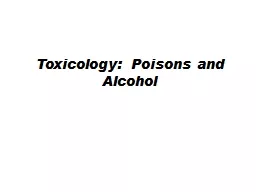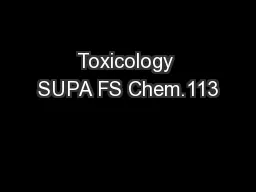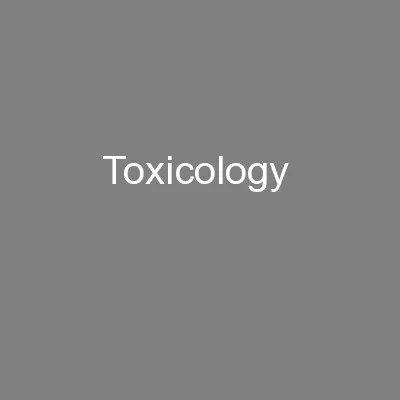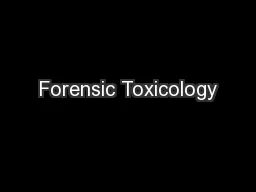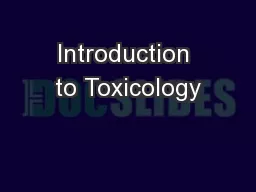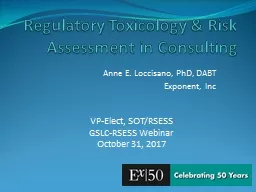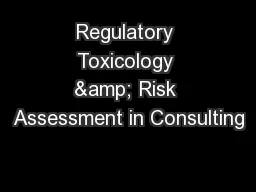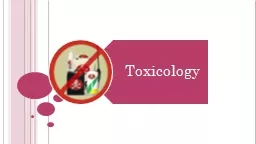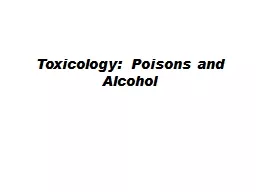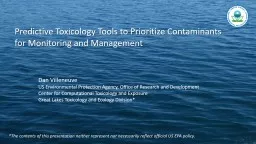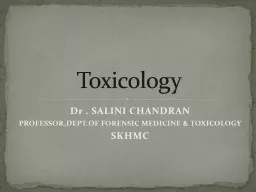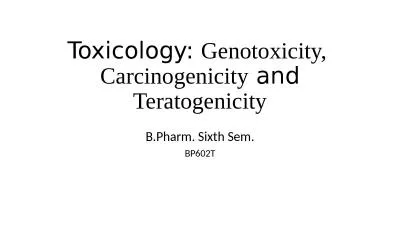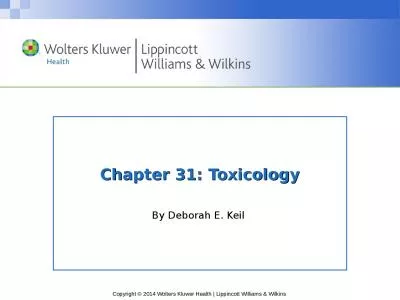PPT-Toxicology: Poisons and Alcohol
Author : articlesnote | Published Date : 2020-06-17
Toxicology Toxicology the study of the adverse effects of chemicals or physical agents on living organisms Types Environmental air water soil Consumer foods cosmetics
Presentation Embed Code
Download Presentation
Download Presentation The PPT/PDF document "Toxicology: Poisons and Alcohol" is the property of its rightful owner. Permission is granted to download and print the materials on this website for personal, non-commercial use only, and to display it on your personal computer provided you do not modify the materials and that you retain all copyright notices contained in the materials. By downloading content from our website, you accept the terms of this agreement.
Toxicology: Poisons and Alcohol: Transcript
Download Rules Of Document
"Toxicology: Poisons and Alcohol"The content belongs to its owner. You may download and print it for personal use, without modification, and keep all copyright notices. By downloading, you agree to these terms.
Related Documents

